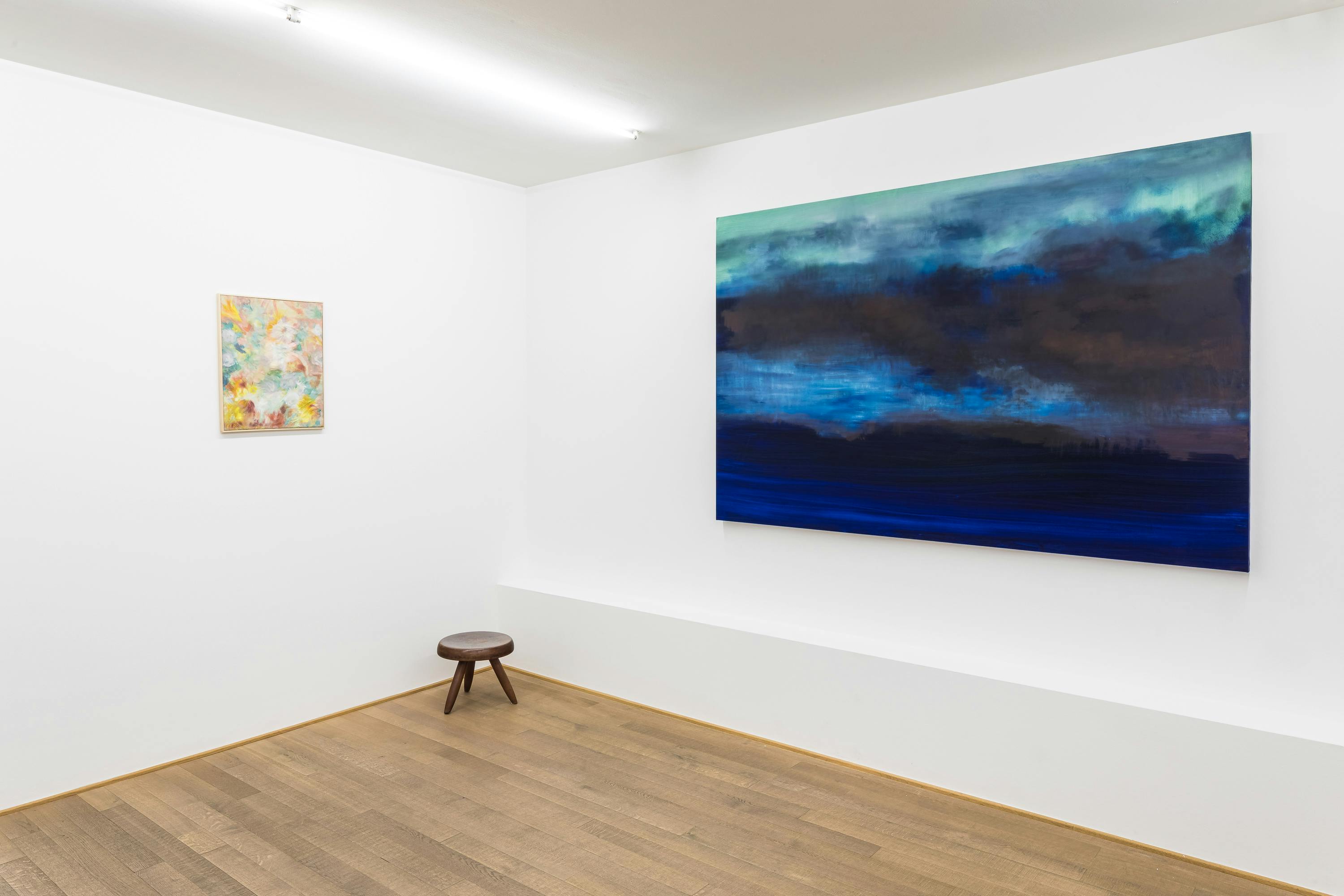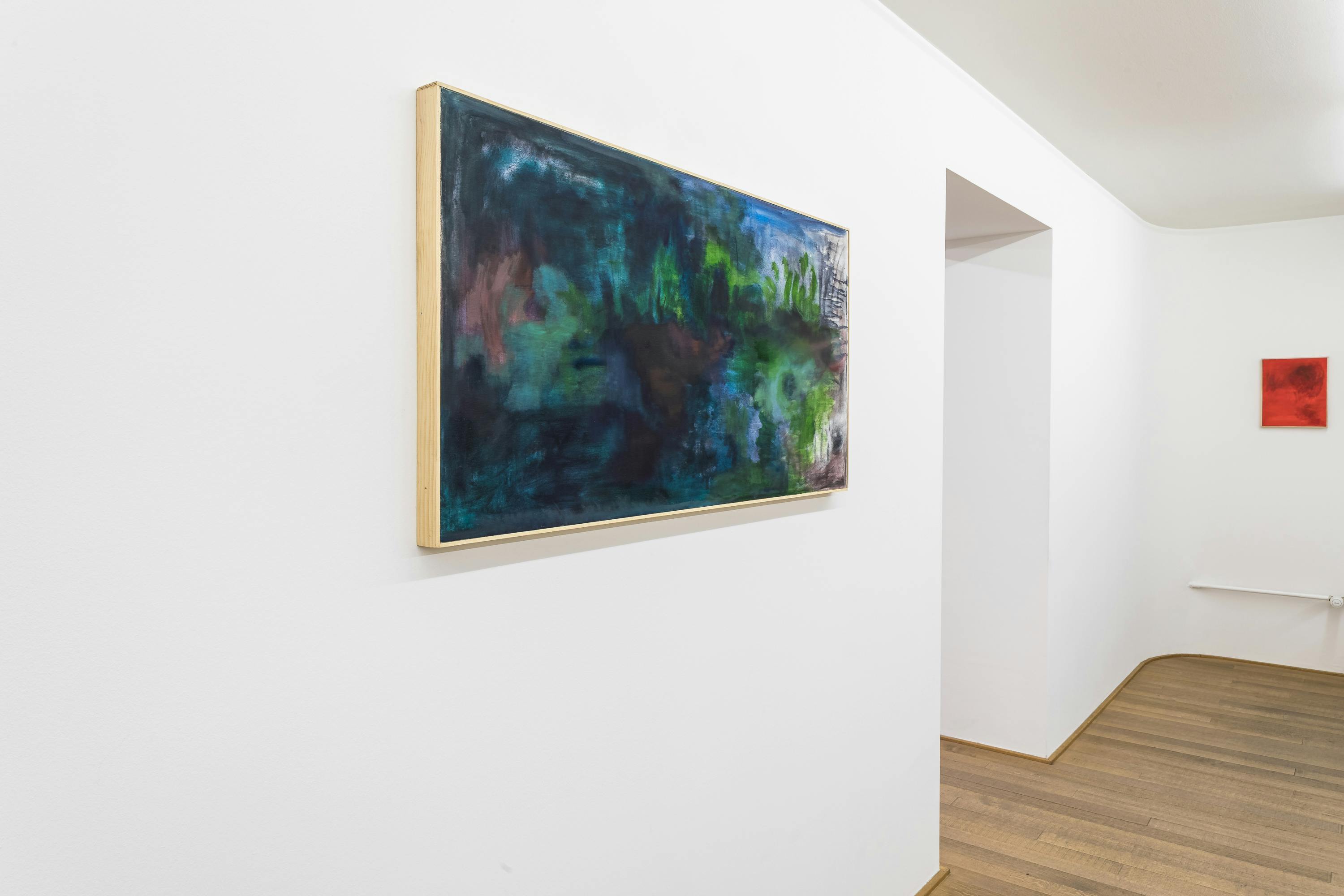Vernissage: Thursday, November 2, 2023, 6pm
Exhibition Duration: November 3, 2023 – January 6, 2024
Opening Hours: Tue-Fri 11am to 6:30pm, Sat 11am to 5pm
This is a scene I often approach at sunset, leaving the city after work. The car curls onto the turnpike in New Jersey and that initial stretch of highway lays bare the sky to multiple smoke stacks off its shoulder. They off-gas steam and signal a stage in the resource refinery process I don’t know about but pay witness to like a sad miracle. Smoke plumes bruise the light cascading through its particulates. Unbelievable arrays of color emerge against the pale atmosphere like a bludgeon. I drive through a sublime that births and eats itself at once. More smoke blots out large swathes of the image.
This is the consequence of a world ready to throw itself out. My eyelids lower like the silk rope of spiders. A billion stars extract themselves from the comfort of time and into my eyes to water me. Dust swallows up the fierce heat of the sun. The sky fades to gray, illuminated by city light cast in the sun’s absence.
Originally from Western Canada, Zoe Koke is trained in photography and paints in her garage studio in Los Angeles. the second space, Koke’s debut solo presentation in Europe, comprises a suite of landscape paintings. Pared down renderings of thrashing brush, flowers, fields, bogs and a large body of water are visited by both gaseous and pooling abstractions throughout the corpus. For Koke, this blemishing converts serenity to ambivalence, and functions like a warning. Quick and layered brushstrokes establish the climate for a weather of color sometimes distilled in a small monochrome image (Platelets) or a triptych of three (Yellow Sky). These, too, read as cautionary, and liken to scenes of wildfire or a rapture with degraded visibility.
Some works are titled by textual reference, after poets Emily Dickinson (Apotheosis), Virginia Woolf (Blue and Green), and Hazel Hall (Before Quiet); Shakespeare (Plummet Sound); contemporary artist Allan Sekula (The Forgotten Space); French philosopher Simone de Beauvoir (Lived Experience); and the Greek myth of ‘Leda and the Swan’ (Leda in the Lake and Leda’s Lake). A conceptual dimension forms through the metaphor, as in Leda in the Lake and the moral of consent, in which the artist depicts LA’s Echo Park. Once an encampment amid COVID’s peak, the site as such has since been violently dismantled. In the painting, a pool of red presents in a lily pond. Abstractions interrupt the overwhelm of awe and cliché inherent to landscape and call for critique. Whose land is this? Whose ailing heart?
A meditation on landscape and its trappings, the second space can be read at the nexus of three histories: the history of landscape photography, a method of dispossession employed in North America’s western expansion, which pictured the land as unpeopled, for the taking; the Impressionist movement in painting, which emerged in part in response to photography, in its privileging of the mark, the subjectivity of its maker, liberating catharsis from the art-act; and Romanticism, an artistic impulse that took nature as its muse, responding to its disappearance from everyday life in the industrial revolution.
Koke ushers these histories to a surface. As well, she’s sentimental. Through the hum of nearby traffic, product of the Arroyo Seco Parkway—America’s oldest freeway—she paints nature imagined, remembered, sensed—in pieces and encroached upon.
Lucas Regazzi









